Mark Caney's Blog, page 18
March 3, 2015
Baby dolphin rescued by locals
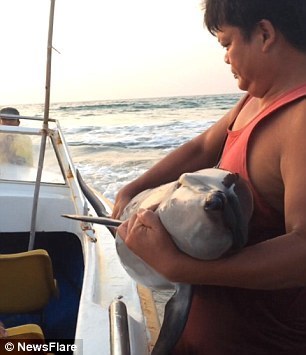 Burmese locals came to the rescue after a baby dolphin appeared to lose its way and become stranded on a beach in Myanmar.
Burmese locals came to the rescue after a baby dolphin appeared to lose its way and become stranded on a beach in Myanmar.
One observer filmed the rescue attempt as locals tried again and again to guide the young dolphin out to sea.
The mammal can be seen desperately trying to swim back to deeper water only to be prevented by the strong waves.
Initial attempts made by the locals to push the dolphin back into the direction of the open sea were also thwarted by the tide
Eventually the locals hired a speedboat as a means to escort the animal back into the open sea.
Carrying it on-board like a new-born baby, the filmmaker travelled in the boat to capture the very moment the dolphin was released back into the calmer ocean.
Locals noted that despite the amount of human intervention the animal did not struggle against them, as if it knew that they were there to rescue it.
The video concludes with the dolphin swimming off, happy to be back in the deeper and calmer open sea.
It is now hoped that after its ordeal the baby dolphin can once again be reunited with its kind.
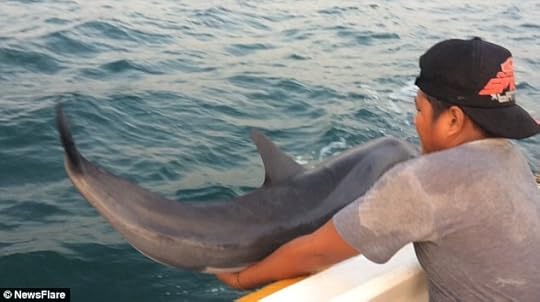 Click image for video
Click image for videoThe incident occurred at Ngwe Saung Beach in the south of the country, a resort that attracts much exotic marine life.
And dolphins are no strangers to these parts as the neighbouring Irrawaddy River is home to the famous Irrawaddy dolphins – a species of Oceanic dolphin with a high and rounded forehead.
Source: Daily Online
March 1, 2015
Teens convicted in second US dolphin bow-killing
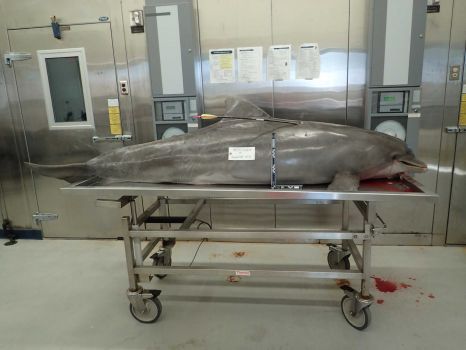 Two Texas brothers face up to a year in federal prison after pleading guilty to killing a bottlenose dolphin with a compound bow in the Gulf of Mexico. It is the second case of a dolphin slain by arrow to go to court in recent months.
Two Texas brothers face up to a year in federal prison after pleading guilty to killing a bottlenose dolphin with a compound bow in the Gulf of Mexico. It is the second case of a dolphin slain by arrow to go to court in recent months.
According to the U.S. Department of Justice, Cory Moseley, 23, and Cade Moseley, 18, were fishing on Cow Bayou near Orangefield, Texas, when they saw two dolphins and began shooting arrows at them in July 2014. The case was investigated by the National Oceanic and Atmospheric Administration’s law enforcement division.
“It is disheartening that individuals would kill a dolphin for the sport of it, especially in today’s age,” said Tracy Dunn with NOAA in a press release. “And, without the determination and skills of the NOAA investigator, supported by [Coast Guard Investigative Service] and [Texas Parks and Wildlife Department] this unnecessary death may have gone unsolved.”
A NOAA official said dolphin killings are not extremely rare, noting the creatures’ corpses have been found with arrows, gunshot wounds, and even a screwdriver once.
Source: Chron
February 28, 2015
Dolphins set up home in the Mediterranean after the last Ice Age
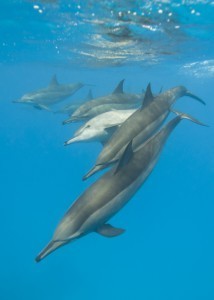 The bottlenose dolphin only colonised the Mediterranean after the last Ice Age — about 18,000 years ago — according to new research.
The bottlenose dolphin only colonised the Mediterranean after the last Ice Age — about 18,000 years ago — according to new research.
Leading marine biologists collaborated in the study — the most detailed ever conducted into the genetic structure of the bottlenose dolphin population in the Mediterranean to date — and the results have been published in the journal Evolutionary Biology.
Tissue samples from 194 adult bottlenose dolphins (Tursiops truncatus) were collected between 1992 and 2011 from the five main eastern Mediterranean basins.
The team’s aim was to investigate the population structure and historical processes that may be responsible for the geographic distribution of the species in that area. No other study has compared the fine scale genetic structure within the Mediterranean, with the well described genetic structure in the North Atlantic.
The Mediterranean basin in particular is a global biodiversity hotspot and several marine species exhibit complex population structure patterns over relatively short geographic distances. It is therefore a particularly interesting region for scientists to investigate the drivers of population structure in marine organisms.
One of the study’s lead authors Dr Andre Moura, from the School of Life Sciences, University of Lincoln, UK, said: “As a consequence of the bottlenose dolphin only colonising the Mediterranean after the last glacial maximum or Ice Age, population structure in the Mediterranean mainly arises from the different colonisation routes the various early colonisers took, and the genetic varieties they carried.
Full story: Science Daily
February 24, 2015
SeaWorld ends public dolphin feeding
The decades-long tradition of feeding dolphins has ended at SeaWorld’s Orlando theme park.
People have gathered for years to pet the creatures and spend a few dollars on food for them. Now SeaWorld has revamped its Dolphin Cove area. Visitors can still pet dolphins but can no longer lure them with $7 trays of fish.
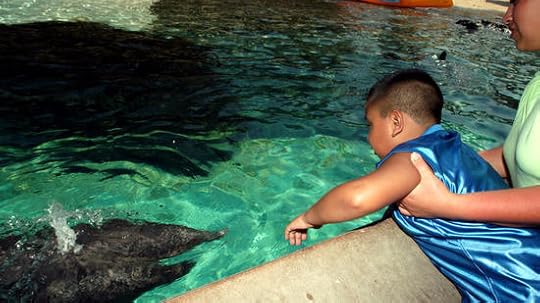
Instead, guests can purchase packages that include touching the dolphins and having their photos taken with them under a trainer’s supervision. Those 10-minute packages — starting at $15 per person — will not include feeding. Visitors can sign up in advance online beginning March 2. Each session can include five groups of up to 10 people each.
Asked why it changed the system, SeaWorld spokeswoman Becca Bides said in an email the new program is similar to popular ones in SeaWorld’s San Diego and San Antonio parks.
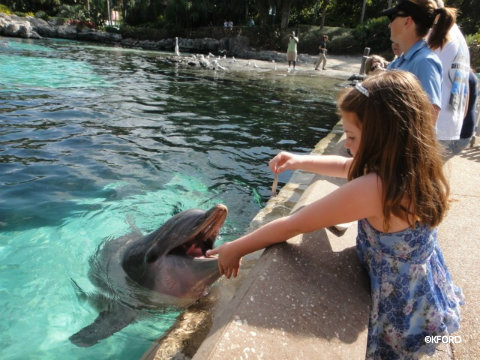 Mark Palmer, associate director for the International Marine Mammal Project at nonprofit Earth Island Institute, called it “a good move.” Visitors could accidentally drop plastic toys and other things into pools, where dolphins could eat them, said Palmer, who opposes captivity.
Mark Palmer, associate director for the International Marine Mammal Project at nonprofit Earth Island Institute, called it “a good move.” Visitors could accidentally drop plastic toys and other things into pools, where dolphins could eat them, said Palmer, who opposes captivity.
Pools where large numbers of people can feed dolphins are rare, Palmer said. Dolphins are “so prone to issues of stomach problems and things like that; most aquariums wouldn’t do it.”
There have been a few reported incidents of children bitten while petting or feeding the dolphins. In 2012, an 8-year-old girl made national news after her father posted a video of a dolphin biting her arm as it grabbed the paper fish tray she held. Ending the feedings should lessen those incidents, Palmer said.
A petition on TakePart.com calling for an end to the feedings has more than 24,000 signatures.
“Most animal theme parks have discontinued dolphin-feeding programs because of the risks to the dolphins and the untrained public,” it says.
Full story: Orlando Sentinel
February 14, 2015
Dolphin Way Reviewed
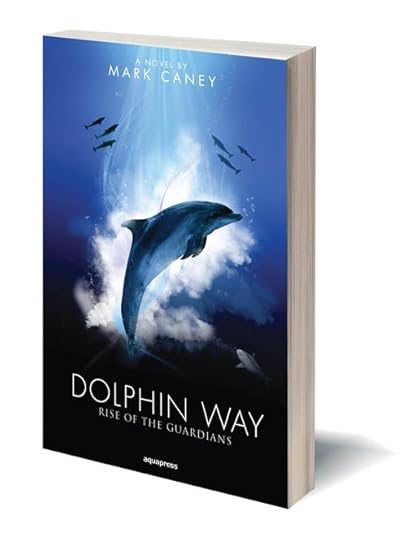 A detailed new review on Goodreads just caught our eye – it was posted by the mysterious “J.T.” Whoever you are, thank you!
A detailed new review on Goodreads just caught our eye – it was posted by the mysterious “J.T.” Whoever you are, thank you!
There are certain things that amaze me about authors. One of those is how some writers can create worlds so different from the world we live in. Mark Caney has created an entire society that includes a culture, music, stories and legends, poetry, etiquette and all else that makes up a fully developed society. That this society is underwater in the oceans we all know, and populated by dolphins, makes it all the more amazing to me. He seems to have all the details worked out – right down to the quotes at the start of each chapter that are ‘from’ ancient dolphin poets, scriptures and other writings.
The descriptive prose pulled me in until I could see the scenes of the book playing out in my mind as I read. Never once did I forget that the characters were dolphins but they were so well developed that I had my favourites and was trying hard to figure out the secrets and mysteries of the plot right along with them.
The issues of the day, in the dolphin world, revolve around the changing ocean and resultant loss of food sources. Something must be done but some dolphins have gone too far in looking for a solution. With members of the Dune Coast clan being murdered and the renegade Guardians living too close for comfort, things start to spiral out of control. Touches the Sky looks for answers and finds betrayal.
Dolphin Way: Rise of the Guardians is a pointed commentary about the state of our world and how our lack of response to environmental issues is affecting other species. But it is also a charming and involved coming of age story set in the sea. Caney has written a book that brings new meaning to the word perspective. The characters, the plot, and the ocean scenery take the reader into the intimate world of the dolphin characters allowing the reader to become entwined in their lives.
February 6, 2015
Advice on seeing wild dolphins
Make sure your clients’ whale and dolphin-watching activities allow these mammals to thrive in the wild, says responsibletravel.com’s Justin Francis
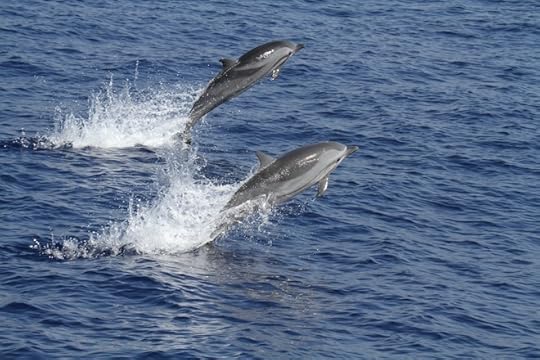 When an organisation specialising in animal welfare was announced as the winner of the 2014 World Responsible Tourism Awards sponsored by the Oman Ministry of Tourism, it was a moment that recognised just how important this issue has become for the tourism industry.
When an organisation specialising in animal welfare was announced as the winner of the 2014 World Responsible Tourism Awards sponsored by the Oman Ministry of Tourism, it was a moment that recognised just how important this issue has become for the tourism industry.
The high-profile debates around the ethics of dolphin and whale attractions are continuing and yet these are still popular
with tourists around the world. Responsibletravel.com suggests some tips you can use before booking clients, and share with them to help ensure their travel supports the welfare of whales and dolphins.
1. Go wild
Book your clients on wild whale or dolphin-watching tours and avoid marine park shows. Watching these highly intelligent creatures perform circus tricks for fish snacks is, in responsibletravel.com’s view, one of the cruellest forms of “entertainment” and offers your clients no insight into their curious personalities, their unique social interactions and complex natural behaviours.
2. Find the experts
Wild whale-watching is increasing dramatically around the world and needs to be managed carefully in order to give a good customer experience and limit the stress caused to the animals and their environments. The World Cetacean Alliance is a great place to find local operators who “get” whales, rather than just getting business out of them.
A responsible tour operator will have expert guides onboard, will focus on education and adhere to their own responsible whale-watching policy.
3. Be wary of false flags
No global accreditation scheme exists for whale-watching tours and many tour operator brochures will be plastered in stickers shouting about their eco-affiliations. But are these legitimate or just a marketing ploy? Before you book your clients, double check that any conservation organisations still exist and that their affiliations are recognised and up to date.
4. Size matters
Choose your ground partners carefully. Usually smaller boats (maximum 20 people) will offer a better experience for your clients, as the guide or skipper will be able to personalise the information they give about the whales. Operators that replace guides with pre-recorded spiel are usually more interested in cutting costs than in whale welfare.
5. Swim with dolphins on their terms
Clients with their hearts set on a dolphin encounter may be surprised to find out that responsible opportunities to swim with these creatures in the wild do exist.
Look for operators that enforce well-established codes of conduct to limit numbers of swimmers and time in the water – the Azores, for example, offers well-regulated opportunities. And always remind clients that these types of encounter are on the dolphins’ terms, not theirs.
6. Look, but don’t touch
If your clients love dolphins and whales, they will appreciate the opportunity to see them play and swim happily in their natural environment, free from stress and disturbance. So remind clients that they should not attempt to touch whales or dolphins, even if they come close to the boat.
7. Avoid feeding
Whales and dolphins should never be fed by clients on a tour as it can disrupt natural feeding habits and cause severe problems in the long run. If clients witness this, or any other evidence of poor practice, encourage them to report the operator to local conservation bodies.
8. Lose the boat
For truly responsible whale and dolphin-watching, head for dry land. If clients are travelling to South Africa, suggest they include Hermanus in their itinerary.
Between June and December, Southern Right Whales migrate from Antarctica to these warmer waters, usually coming in close to the town’s cliffs. The town “Whale Crier” is on hand to let everyone know whether sightings are a good prospect.
January 31, 2015
Rare white dolphin spotted off California coast
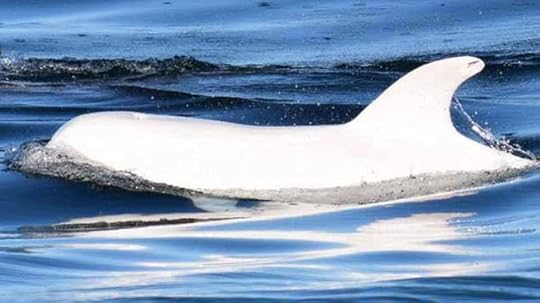 In an extremely rare occurrence, an all-white dolphin was spotted in Monterey Bay, off the coast of California. Melissa Galieti of Monterey Bay Whale Watch Marine Biologist Melissa Galieti of Monterey Bay Whale Watch spotted the all-white Risso’s dolphin swimming in the Bay area on Jan. 25 of this year.
In an extremely rare occurrence, an all-white dolphin was spotted in Monterey Bay, off the coast of California. Melissa Galieti of Monterey Bay Whale Watch Marine Biologist Melissa Galieti of Monterey Bay Whale Watch spotted the all-white Risso’s dolphin swimming in the Bay area on Jan. 25 of this year.Galieti told ABC, in an email, that Risso’s dolphins are usually born dark grey and lighten as they mature and acquire scratches and scars. These scars emerge from dominance displays with other dolphins, as well as their squid prey that they typically feed on.
Though the young dolphin calf is completely white, Galieti said she and her colleagues are still trying to determine if the dolphin is truly albino.
“If it has blue eyes, it would be leucisitic, and not have a complete loss of pigmentation,” wrote Galieti, “Whereas red eyes would determine it to be albino.”
Experts at Monterey Bay Whale Watch said they believe it was the same white dolphin seen in Monterey in August 2014.
Source: abc news
January 26, 2015
Australian dolphin surveyors praise Dolphin Way
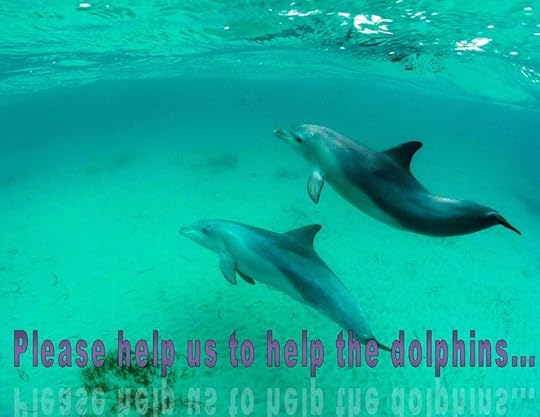
We just received this kind post on the Dolphin Way Facebook page:
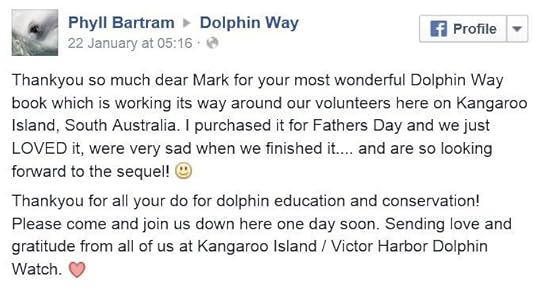
Post
For more information about this group, click here.
January 19, 2015
Gruesome images of shark attack on dolphin as beaches in Australia closed for record seventh day
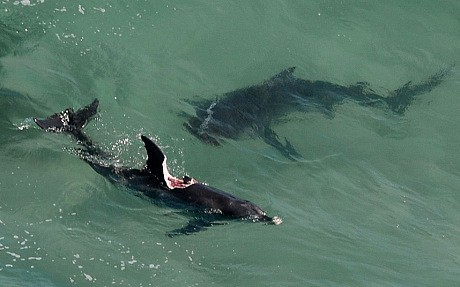 A dolphin with a chunk of its body missing after an attack by an eleven-foot shark has been captured in graphic photographs in the Australian city of Newcastle, where beaches remain closed for a record seventh day due to continued sightings of a growing group of deadly sharks.
A dolphin with a chunk of its body missing after an attack by an eleven-foot shark has been captured in graphic photographs in the Australian city of Newcastle, where beaches remain closed for a record seventh day due to continued sightings of a growing group of deadly sharks.
The attack occurred just 60 yards from shore and came as the council admitted that there was not merely one shark – “the biggest we’ve ever had” – lurking around the city’s beaches, but several of different species.
The attack on the dolphin was by a tiger shark, which took a chunk from the dolphin’s back and then lunged forward for a second bite to take a chunk out of its tale. The shark then reportedly hung back and waited for the dolphin to die before feeding on it.
But the main concern, which led to the closure of the city’s seven beaches, has been the presence of a 15-foot, 1.7-ton great white shark.
Rachel Kulk, a 22-year-old local surfer told The Newcastle Herald the shark was ‘‘as round as a car’’ with a fin ‘‘more than half the size of my surfboard’’.
Several additional sharks have since been spotted and at least two dolphin carcasses have been found around the city, which is about 100 miles north of Sydney.
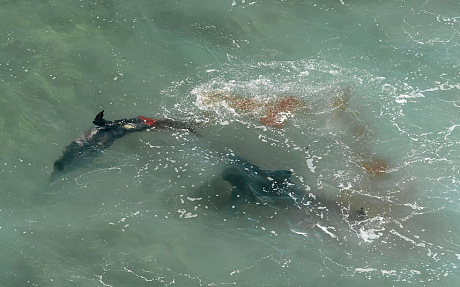 “It is now confirmed that [several] sharks are being sighted,” a Newcastle council spokeswoman said.
“It is now confirmed that [several] sharks are being sighted,” a Newcastle council spokeswoman said.
It is believed the sharks may be coming closer to shores across Australia this summer due to warmer water temperatures.
The government in the state of New South Wales has indicated it would only consider a cull if public safety is at risk.
Experts said a cull is probably unnecessary because large sharks need to move around to find new sources of food and are unlikely to remain in the same stretch of coast for an extended period.
Full story: The Telegraph
January 15, 2015
NZ government opens Maui’s dolphin area for oil drilling
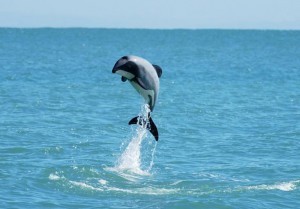 The New Zealand Government has opened up more than 3000 square kilometres of a marine mammal sanctuary for oil and gas drilling, home to the critically endangered Maui’s dolphin. It comes less than a week after the International Whaling Commission urged our Government to do more to save the species. The Maui’s dolphin is the world’s rarest. It is estimated there are only 55 left. “I think primarily once you go from exploration right through to production, you’re not jeopardising the wildlife,” says Minister of Energy and Resources Mr Bridges. In April, the Government signed off a block offer – the biggest area ever of sea and land for oil and gas exploration. Now official documents obtained by the Green Party reveal the Department of Conservation pointed out that this is the home of the Maui’s dolphin, known as the West Coast North Island Marine Mammal Sanctuary.
The New Zealand Government has opened up more than 3000 square kilometres of a marine mammal sanctuary for oil and gas drilling, home to the critically endangered Maui’s dolphin. It comes less than a week after the International Whaling Commission urged our Government to do more to save the species. The Maui’s dolphin is the world’s rarest. It is estimated there are only 55 left. “I think primarily once you go from exploration right through to production, you’re not jeopardising the wildlife,” says Minister of Energy and Resources Mr Bridges. In April, the Government signed off a block offer – the biggest area ever of sea and land for oil and gas exploration. Now official documents obtained by the Green Party reveal the Department of Conservation pointed out that this is the home of the Maui’s dolphin, known as the West Coast North Island Marine Mammal Sanctuary.
The area the Government has opened up for potential drilling overlaps 3000 square kilometres into the sanctuary, including large areas off the Taranaki coast.
“There has been petroleum exploration in that area for a long period of time,” says Mr Bridges. “I think it’s about achieving a balance.”
Last week the International Whaling Commission said it had “extreme concern” about the decline in Maui’s dolphins.
Mr Bridges had an earlier bungle with the block offer, signing off the country’s biggest forest park for drilling, Victoria Forest Park, despite having never heard of it.
The conservation lobby was outraged with the Victoria Forest Park incident, and opening up the Maui’s dolphins’ home for exploration won’t go down well either.
Source: 3 News



